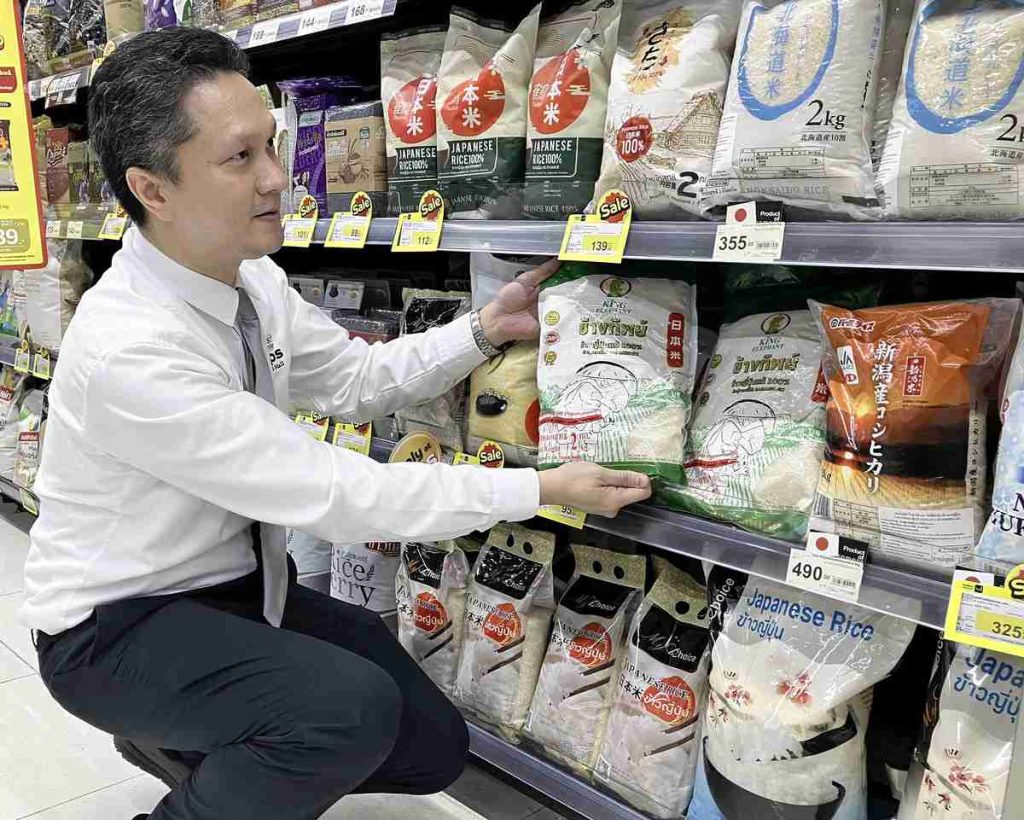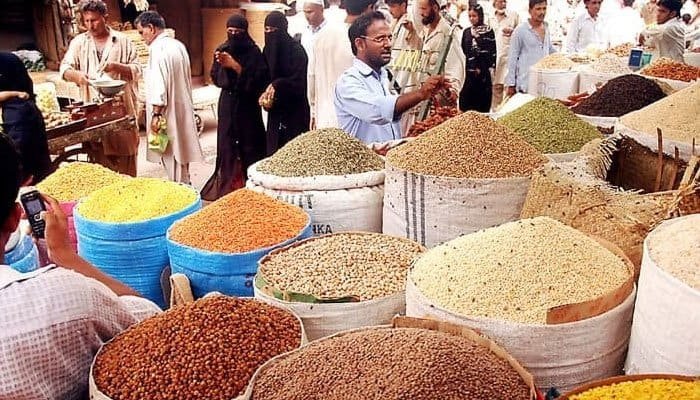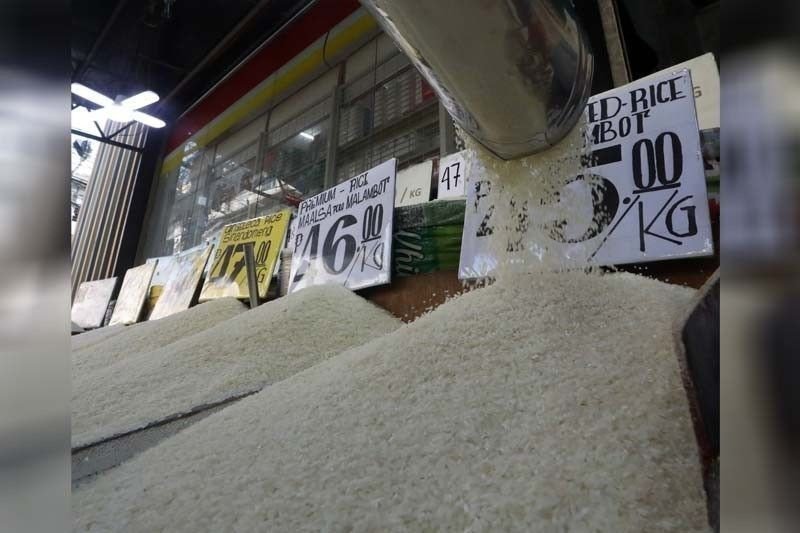Tags
Vietnam, Thailand Aim to Grow Rice Exports to Japan

Packets of Thailand-grown japonica rice are displayed alongside those imported from Japan in a supermarket in Bangkok.
By Takashi Itoda / Yomiuri Shimbun Correspondent
BANGKOK — Vietnam and Thailand, which are among the world’s top three rice exporters, are expecting an increase in their exports of rice to Japan.
In both countries, production of japonica rice, which is the same short-grain variety as that produced in Japan, has been expanding amid a boom in washoku Japanese cuisine.
The countries aim to turn the surging rice prices in Japan into a business opportunity.
In a supermarket in Bangkok that is part of the Tops group, a major retail chain in Thailand, five-kilogram packs of japonica rice produced in the country were sold for 275 baht (about ¥1,200).
The price is much lower than that in Japan. In other Japanese supermarkets in Thailand, Sasanishiki and other Japanese-brand rice, harvested in Thailand, were being sold at similar prices.
The climate in Thailand is warm all year round and thus rice can thrive there. Though the main variety grown is indica long-grain rice, recently an increasing number of farmers have begun growing the japonica variety.
A 44-year-old farmer who has grown the Koshihikari brand of rice from Japan for a year said that he can sell japonica rice at double the price of Thailand’s indica rice and his profit margin is high. In his rice paddies, it is possible to harvest rice three times a year, he said.
The export value of rice from Thailand to Japan in 2024 increased 1.3-fold from 10 years ago to $183 million (about ¥26.5 billion). Currently, most of the exports are indica rice and it is assumed that much of the production of japonica rice is for Thailand’s domestic market.
The Thai government is paying attention to Japan’s rice market situation. Thai Commerce Minister Pichai Naripthaphan said that the Thai government wants to exploit a market where Thai rice can be sold at high prices and increase rice exports.
According to an estimate announced by the U.S. Agriculture Department in May, the total amount of global rice exports in fiscal 2024 was 61.4 million tons. By export volume, India was ranked top with a share of about 40%, followed by Vietnam at 13% and Thailand at 11%.
On June 5, the Vietnam Rice Industry Association (VIETRISA) exported for the first time 500 tons of rice of a new brand, “Low-emission Green Vietnamese Rice” of the japonica variety. Its selling point is that greenhouse gases emitted during its growth can be reduced.
The new brand of rice was cultivated with an eye on sales in Japan, where consumers are environmentally conscious and quality standards are strict.
VIETRISA Chairman Bui Ba Bong said that Japan’s current rice shortage is a good opportunity for Vietnam-made rice to enter the high-end market. VIETRISA aims to continuously supply rice to the Japanese market.
When Japan imports rice, a tariff of ¥341 per kilogram is imposed on amounts exceeding a tariff-free quota called “minimum access.”
But Japanese companies, mainly trading firms, have increased rice imports because the prices are lower than domestically produced rice even after the tariff is added.
The volume of rice exported from Taiwan to Japan reached 7,759 tons between January and May, up more than six-fold from the corresponding period last year. Taiwan-produced rice is similar in taste and growing techniques to Japan-produced rice.
Going forward, it is possible that rice imports from Southeast Asia will also increase.
However, if price gaps between imported rice and domestically grown rice widen, it may negatively impact Japanese rice farmers. The possibility will likely stir up controversy.
https://japannews.yomiuri.co.jp/world/asia-pacific/20250617-264300/Published Date: June 17, 2025






